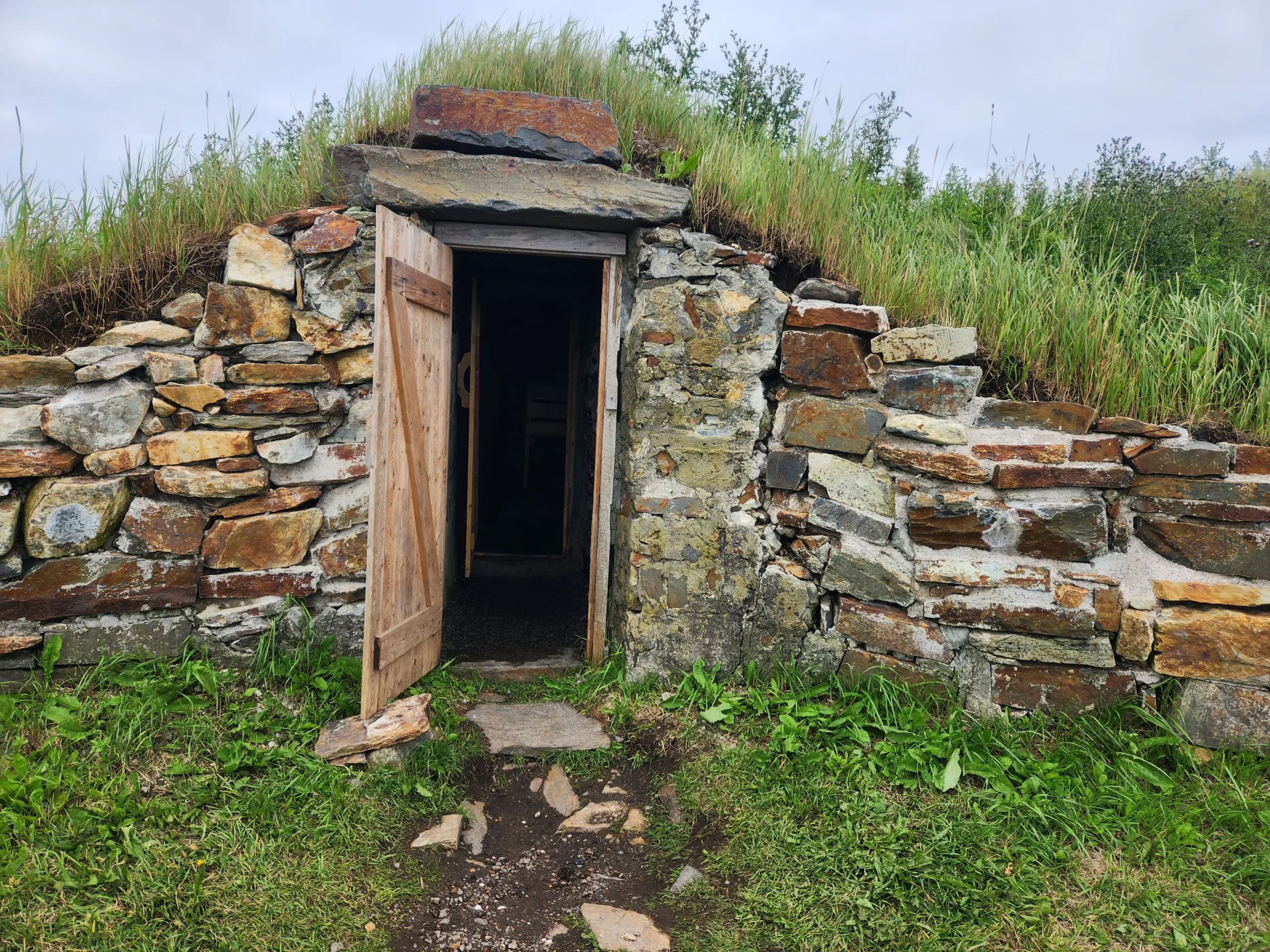15 Beautiful and Unique Things To Do In Newfoundland
15 Beautiful and Unique Things To Do In Newfoundland. Exploring the Beauty of Newfoundland: A Guide to 15 Unique and Enchanting Activities.
Newfoundland offers many unique experiences for travellers seeking an off-the-beaten-path adventure.
1. Gros Morne National Park
One can only visit Newfoundland by exploring the wonders of Gros Morne National Park. This UNESCO Heritage Site boasts dramatic fjords, towering cliffs, and diverse wildlife. Hiking the Gros Morne Mountain trail provides a panoramic view that is a photographer’s dream. The park is renowned for its intriguing rock formations. Among its most iconic landmarks are the Tablelands and Gros Morne Mountain summit, a behemoth of a peak to climb that offers panoramic views of the surrounding landscapes. As you hike up this ancient mountain, you’ll witness the forces of tectonic plates that shape the Earth’s surface. This geological spectacle has fascinated scientists and nature enthusiasts for decades.
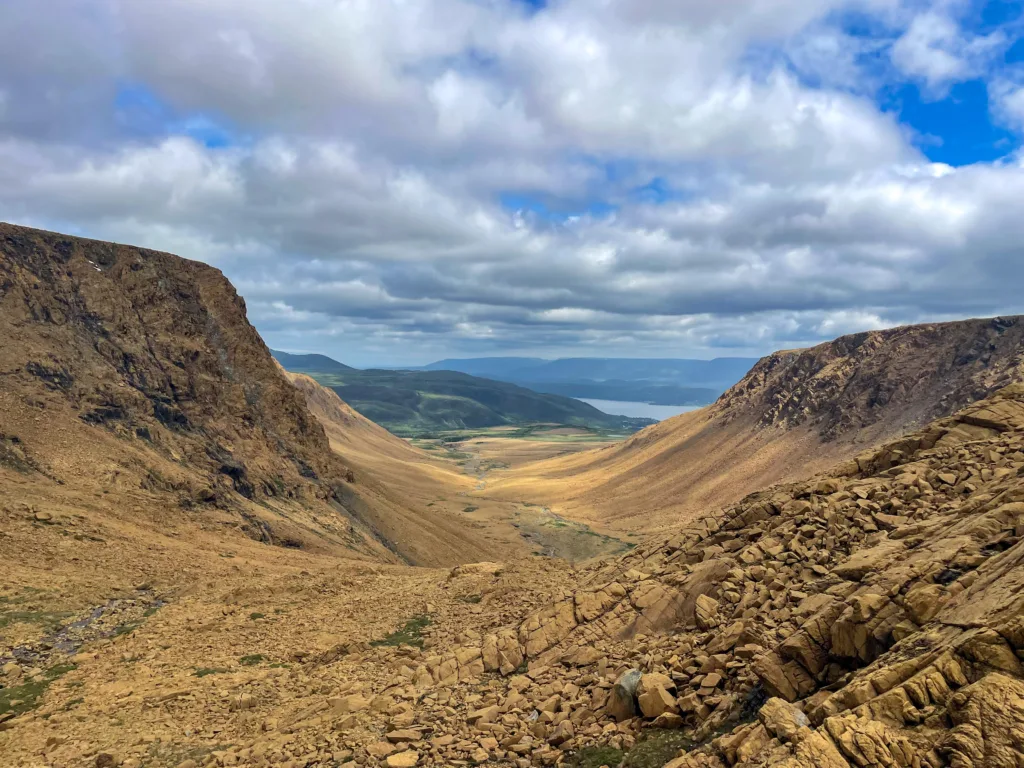
The park’s diverse landscapes are a testament to the dynamic forces that have shaped it over millennia. Gros Morne National Park showcases the full spectrum of natural beauty from the coastal lowlands to the alpine plateaus. Marvel at the serene beauty of Western Brook Pond, a fjord surrounded by lush forests and towering cliffs. Take a boat tour to witness waterfalls cascading down sheer rock faces, creating a mesmerizing and humbling spectacle. You can book your boat tour with Bontours – to Explore the Beauty of Western Brook Pond.
Gros Morne National Park is a haven for biodiversity, with a wide array of flowers that call this pristine wilderness home. The park’s varied ecosystems, including boreal forests, wetlands, and tundra, provide a habitat for numerous species. Birdwatchers will delight in spotting rare species feeding in the area. Moose, caribou, and bears roam freely, allowing wildlife enthusiasts to observe these majestic creatures in their natural habitat.
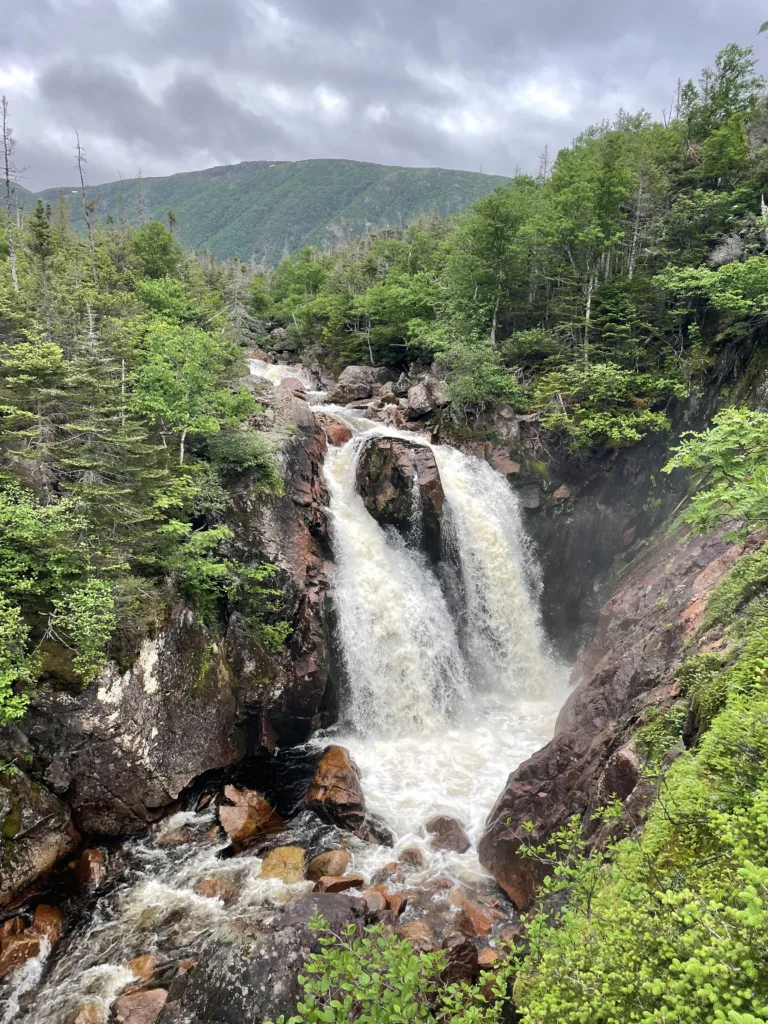
Hiking trails crisscross the park, catering to all skill levels. Gros Morne National Park. Whether you stroll through lush forests or a challenging ascent up Gros Morne Mountain, the park has a trail for every adventurer. Kayaking and canoeing enthusiasts can explore the park’s waterways, immersing themselves in the tranquillity of nature. Beyond its natural wonders, Gros Morne National Park is culturally significant. Explore the quaint coastal villages that dot the landscape, each with its unique charm and history. Engage with the local communities, known for their warm hospitality and rich storytelling traditions. Discover the cultural heritage of the people in the communities who have inhabited this region for decades, adding depth to your exploration of Gros Morne.
2. Iceberg Alley: Witness Nature’s Sculptures
Experience the inspiring beauty of Iceberg Alley, where majestic ice formations drift along the coast. Take a boat tour to closely encounter these natural sculptures, a rare spectacle showcasing nature’s raw power and beauty. Nestled along the rugged coastline of Newfoundland and Labrador lies a natural marvel that captivates the imagination and beckons adventure-seekers from around the globe – Iceberg Alley. This unique stretch of water, renowned for its majestic ice formations, offers an unparalleled experience for those eager to witness nature’s grandeur.
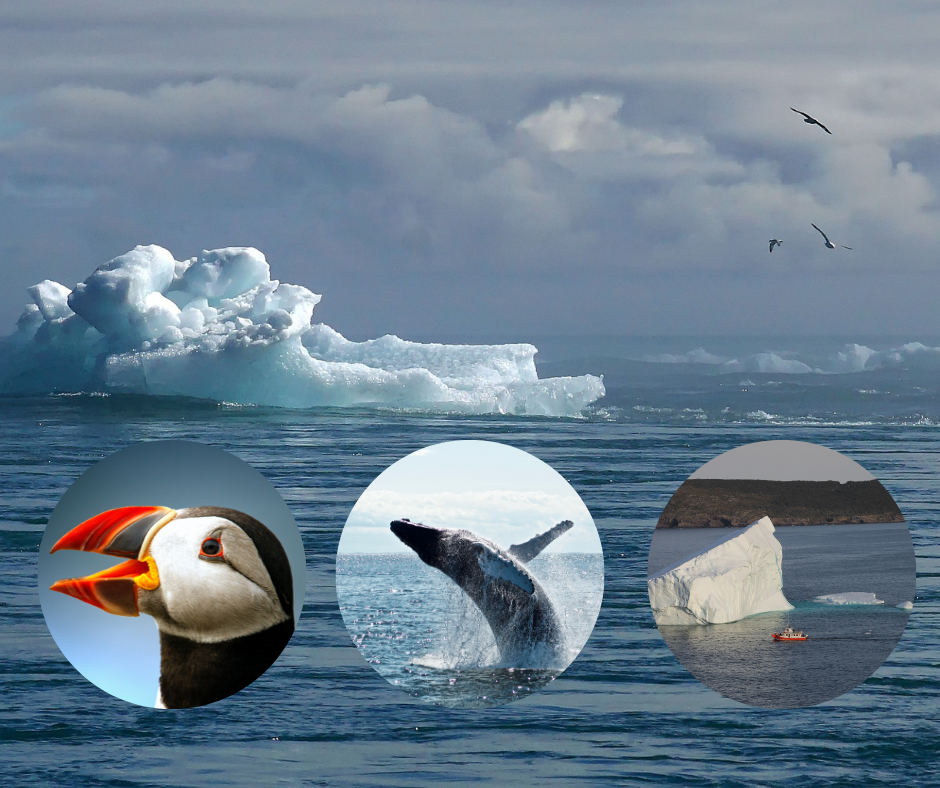
Iceberg Alley, situated off the coast of Newfoundland and Labrador, owes its existence to the annual migration of icebergs from Greenland. These colossal ice formations, sculpted by nature’s forces, embark on a journey of thousands of kilometres, drifting through the Labrador Sea along with the Labrador Current. The spectacle is truly inspiring, with towering ice sculptures revealing a dazzling array of shapes and sizes.
As you stand on the shores of Newfoundland, gazing out at these floating giants, it’s impossible not to be humbled by the sheer scale of nature’s craftsmanship. From massive icebergs to delicate, intricate formations, Iceberg Alley is a living testament to the Earth’s dynamic and ever-changing landscape. Beyond its geological allure, Iceberg Alley holds profound cultural significance for the communities dotting the Newfoundland and Labrador coastline. The arrival of icebergs signals the beginning of a spectacle woven into the fabric of local traditions for centuries. The vibrant tapestry of folklore and stories passed down through generations adds an extra layer of enchantment to the already mesmerizing landscape. Communities along the coast actively engage in iceberg-watching traditions, celebrating the annual migration with festivals and events. This cultural connection amplifies the visitor experience, offering a glimpse into the region’s rich heritage and fostering a sense of camaraderie with the locals.

Careful planning is essential for those embarking on a journey to Iceberg Alley to make the most of this unique adventure. Here are some practical tips to ensure a seamless and enjoyable experience: Iceberg season typically peaks from late spring to early summer, with the best viewing opportunities between May and June. Planning your visit during this timeframe maximizes your chances of encountering diverse ice formations. Scenic viewpoints along the Newfoundland and Labrador coastline, such as Twillingate and St. Anthony, offer prime locations for iceberg watching.
Guided boat tours are also available, providing an up-close and personal encounter with these glacial behemoths. The Atlantic climate can be unpredictable, so prepare for varying weather conditions. Dress in layers, bring waterproof gear and check weather forecasts to ensure a comfortable and safe experience. As you marvel at the beauty of Iceberg Alley, remember to prioritize responsible tourism.
Respect wildlife, follow designated paths, and adhere to guidelines provided by local authorities to minimize your environmental impact. Iceberg Alley beckons with its inspiring blend of natural wonders and cultural richness. As you journey to Newfoundland and Labrador, prepare to be spellbound by the majesty of nature’s ice sculptures and immerse yourself in the vibrant tapestry of local traditions. With careful planning and a sense of adventure, exploring Iceberg Alley promises an unforgettable experience that will linger in your memories for years.
3. Signal Hill: History and Panoramic Views

Visit Signal Hill in St. John’s for a perfect blend of history and breathtaking views. This iconic site played a crucial role in the communications world, and a hike to the summit rewards you with panoramic views of the Atlantic Ocean and the city below. This iconic landmark has played a pivotal role in the region’s Atlantic history and is now a must-visit area for history enthusiasts and nature lovers.
Signal Hill’s history is deeply intertwined with the Atlantic heritage of Newfoundland, and one of Signal Hill’s most iconic moments occurred when the first transatlantic wireless signal travelled across the Atlantic and was received, marking a revolutionary advancement in communication technology. Beyond its historical significance, Signal Hill boasts unparalleled scenic beauty. Visitors are treated to views of the Atlantic Ocean and the city of St. John’s. The vibrant hues of the cliffs juxtaposed against the Ocean’s deep blue create a visual masterpiece that captivates every visitor. Signal Hill National Historic Site.
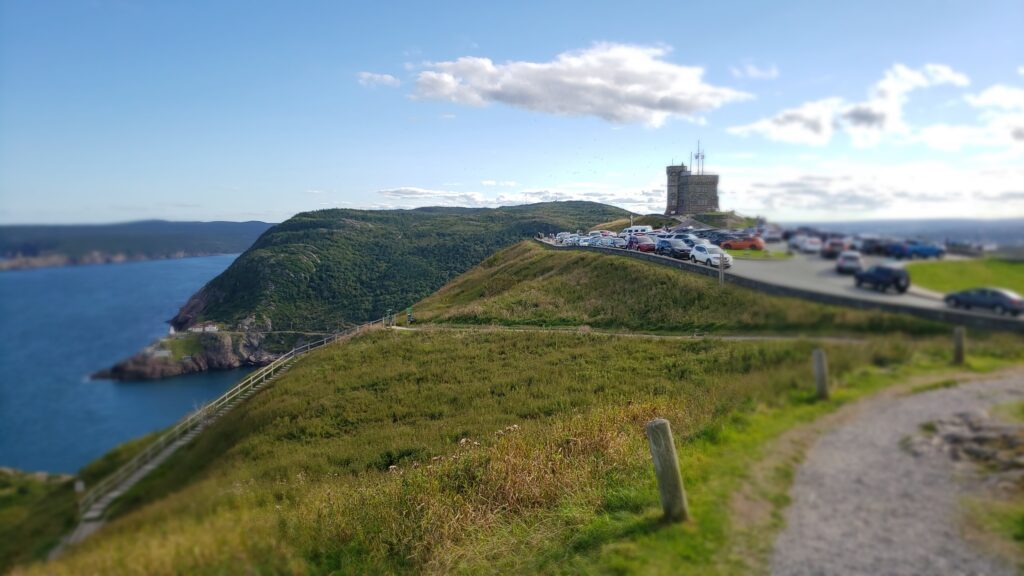
For the avid hiker, Signal Hill provides a network of trails that wind through lush greenery and lead to various lookout points. The North Head Trail, in particular, offers a challenging yet rewarding hike, culminating in breathtaking views from the summit. Signal Hill is not merely a passive landmark. It provides many activities for visitors to immerse themselves in.
History buffs can explore the Signal Hill Visitor Centre, where interactive exhibits and artifacts bring the past to life. Guided tours provide in-depth insights into the historical events that unfolded on this iconic hill. With its rich history, stunning vistas, and diverse activities, Signal Hill is a jewel in St. John’s crown.
Whether you’re drawn to its historical significance, the allure of its hiking trails, or the simple joy of taking in its scenic beauty, Signal Hill offers an unforgettable experience. As you explore this iconic landmark, you’ll immerse yourself in a captivating tapestry of the past and present, making your visit to Signal Hill a journey through time and nature.
4. L’Anse aux Meadows: Step into Viking History
Travel to L’Anse aux Meadows, a UNESCO Heritage Site and North America’s only known Viking settlement. Explore reconstructed Norse buildings and gain insights into the fascinating history of the Vikings in Newfoundland. Nestled on the northern tip of Newfoundland lies a historical place that transports visitors back in time – L’Anse aux Meadows. This site holds the key to understanding the fascinating Viking exploration of North America over a thousand years ago. The Norse, led by the intrepid explorer, established a temporary camp at L’Anse aux Meadows. This strategic location gave them access to the abundant resources of the Atlantic, including timber, wildlife, and essential raw materials. The site’s discovery revolutionized our understanding of Viking exploration and their far-reaching influence. Plan your visit to L’Anse aux Meadows National Historic Site.
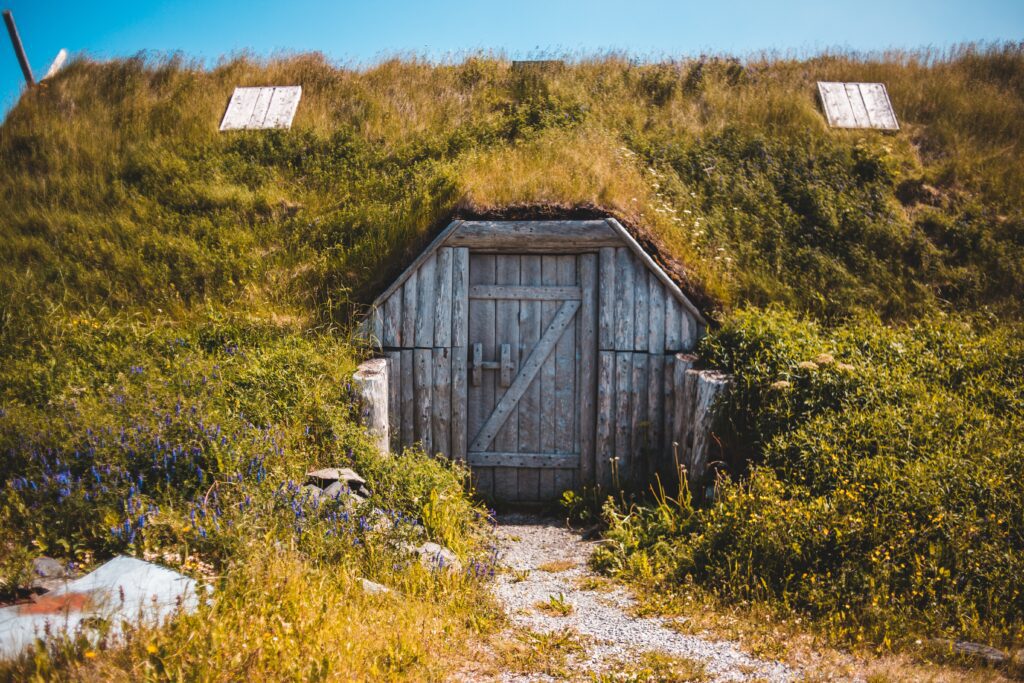
L’Anse aux Meadows boasts a meticulously preserved archaeological site, offering visitors a glimpse into Viking life many years ago. As you embark on a journey through L’Anse aux Meadows, the reconstructed Viking buildings stand as a testament to the resilience and resourcefulness of these early European settlers. Wander through the carefully recreated longhouses, envisioning the bustling community that once thrived in this remote location.
Knowledgeable guides provide engaging narratives, bringing the past to life with tales of exploration, trade, and cultural exchange. Beyond its historical significance, L’Anse aux Meadows captivates visitors with its breathtaking natural beauty. The rugged coastline, framed by the Labrador Sea, creates a dramatic backdrop for the ancient site.
Stroll along the walking trails that wind through the coastal landscape, immersing yourself in this historic enclave’s pristine wilderness. L’Anse aux Meadows opens seasonally, typically from June to October, allowing visitors to experience the best weather conditions. Accommodations are available in nearby communities, providing a comfortable base for exploring the area.
5. Cape Spear: Easternmost Point in North America

Embark on a journey to Cape Spear, the easternmost point in North America. The historic lighthouse offers spectacular views, and standing on the continent’s edge provides a sense of being at the world’s edge.
This iconic Lighthouse, perched majestically on the cliffs, is a beacon of the area’s Atlantic history. This lighthouse is one of the oldest surviving lighthouses in Newfoundland and offers a fascinating glimpse into the region’s Atlantic past. Beyond its historical significance, Cape Spear captivates visitors with its breathtaking landscapes. Imagine standing on the rugged cliffs, surrounded by the vast, deep blue expanse of the Atlantic Ocean.
The panoramic views from Cape Spear provide an inspiring backdrop for photographers and nature enthusiasts. Visitors can witness the dramatic collision of sea and land, creating a mesmerizing, humbling, exhilarating spectacle. Visitors will be delighted by the diverse wildlife that calls Cape Spear home. Seabirds soar gracefully in the skies, while different whales feed in the water, adding a touch of untamed beauty to the surroundings.
During seasonal migration, many Whales frequent the waters off Cape Spear, offering a unique opportunity for visitors to witness these majestic creatures in their natural habitat. Whether you’re an avid birdwatcher or simply seeking a connection with nature, Cape Spear provides a haven for wildlife enthusiasts. Cape Spear Lighthouse National Historic Site.

This area caters to various interests, ensuring every traveller finds something to enjoy. Tourists can immerse themselves in the stories of early explorers and the challenges they faced navigating these treacherous waters. Travellers can explore the scenic trails that wind through the coastal landscapes, offering stunning views and a sense of adventure. For those seeking tranquillity, Cape Spear provides a serene setting for quiet contemplation away from the hustle and bustle of everyday life. The heart of the Cape Spear experience lies in witnessing the sunrise over the vast Atlantic Ocean.
More Ways to Explore Newfoundland and Labrador
- Coming To Newfoundland, U.S., U.K., and Europe Visitors Know This Now.
- Beautiful Islands Around Newfoundland and Labrador to Visit
- Exploring The Unique and Beautiful Culture of Newfoundland
- Six bucket list trips things everyone should do in their lifetime
- Excited For The Ultimate Newfoundland And Labrador Road Trip
- Exploring These 8 Beautiful Unseen Places In Newfoundland
- Enjoy The Beautiful Hidden Gems In Newfoundland Avalon Region
- The 3 Most Beautiful Places In Bonavista Peninsula We Visited
6. Terra Nova National Park: Nature’s Playground
Nature enthusiasts will find paradise in Terra Nova National Park. From kayaking through sheltered bays to hiking along rugged coastlines, the park offers a diverse range of outdoor activities surrounded by pristine wilderness. Nestled in the picturesque landscapes of Central Newfoundland and Labrador, Terra Nova National Park shows the raw beauty of nature.
Covering over 300 square kilometres of pristine wildernessTerra Nova National Park is a haven for outdoor enthusiasts and nature lovers. We will embark on a journey through the scenic wonders of Terra Nova, exploring its diverse ecosystems, captivating wildlife, and the myriad of recreational activities it offers. Terra Nova National Park has a diverse topography ranging from dense boreal forests to rugged coastal cliffs.
As you venture into the park’s heart, you’ll be greeted by sprawling meadows adorned with vibrant wildflowers, reflecting the region’s rich biodiversity. The park’s numerous hiking trails allow you to immerse yourself in these breathtaking landscapes, with each step revealing a new facet of Terra Nova’s natural beauty. Here is a list of trails in the park. Hiking – Terra Nova National Park.
One of the park’s distinguishing features is its rich and varied ecosystems. From the lush woodlands to the pristine waters, Terra Nova is home to a plethora of flora and fauna. The boreal forest, characterized by towering spruce, shelters diverse wildlife, including moose, lynx, and various bird species. The park’s freshwater ecosystems are equally captivating, with crystal-clear lakes and meandering rivers offering Atlantic salmon and brook trout habitat. For wildlife enthusiasts, Terra Nova National Park is a paradise waiting to be explored. The park is a haven for birdwatching. Lucky visitors might even glimpse the elusive bear or a charming fox. The park’s commitment to conservation ensures that these creatures thrive in their natural habitats, creating a harmonious balance between man and nature.
Beyond its natural wonders, Terra Nova National Park provides many recreational activities to cater to every adventurer’s interests. Kayaking along the rugged coastline, hiking through pristine forests, or casting a line into the park’s abundant waters are just a few of the activities that await visitors. The park’s campgrounds offer a chance to immerse yourself in the wilderness, providing a unique camping experience surrounded by the sights and sounds of nature. Terra Nova National Park is more than just a destination; it’s a journey into the embrace of nature. We only scratched the surface of the wonders that await those who explore this pristine wilderness.
7. Whale Watching in Trinity Bay
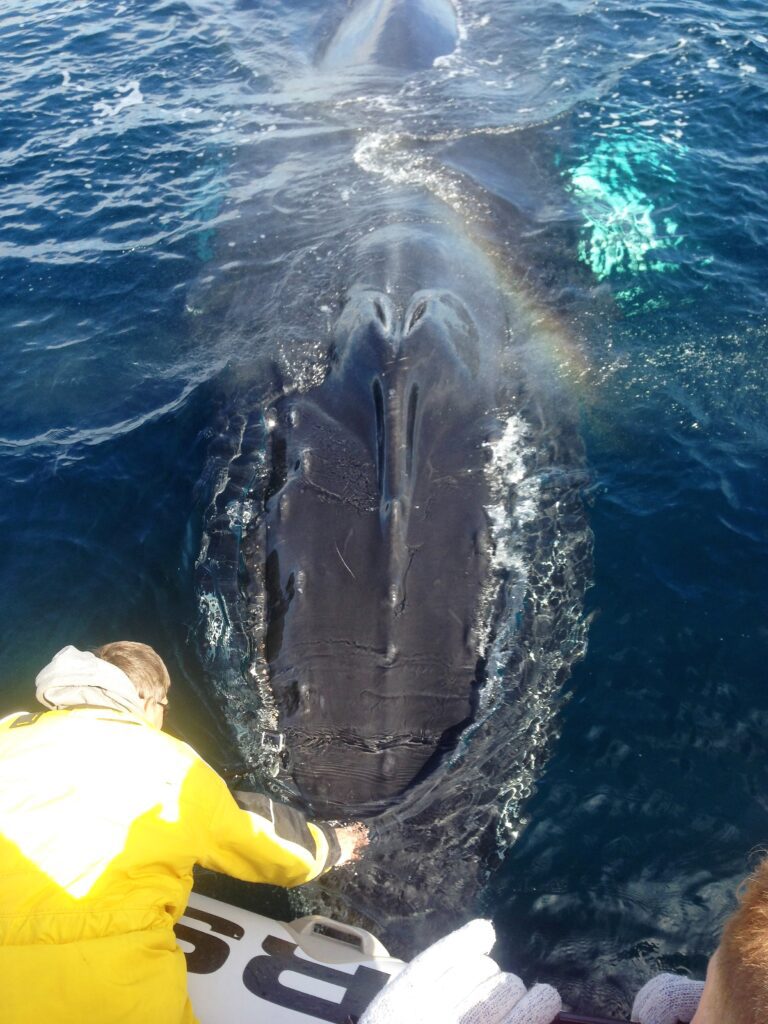
Trinity Bay is a hotspot for whale watching, where you can witness the majestic humpback and minke whales. Join a guided boat tour for an up-close encounter with these gentle giants, creating memories that will last a lifetime. Whale watching has become an increasingly popular and inspiring activity, drawing nature enthusiasts and adventure seekers from around the globe.
Trinity Bay, nestled in the heart of the Bonavista Peninsula, is an exceptional destination for this captivating experience. We will delve into the mesmerizing world of whale watching in Trinity Bay, exploring the diverse marine life, the best times for sightings, and essential tips for an unforgettable adventure. Trinity Bay is a haven for marine biodiversity, boasting a rich ecosystem that provides an ideal habitat for various whale species. Among the most commonly sighted whales are humpbacks, minke, and orcas.
The bay’s nutrient-rich waters create a thriving environment, making it a prime location for these majestic creatures to feed and frolic. You may see humpback whales. They are known for their acrobatic displays and haunting songs. These whales show with their graceful breaches and tail slaps. On the other hand, Minke whales are recognized for their smaller size and playful behaviour, making them a delight for onlookers. The inspiring presence of orcas adds a touch of excitement as these apex predators navigate the waters with remarkable agility.
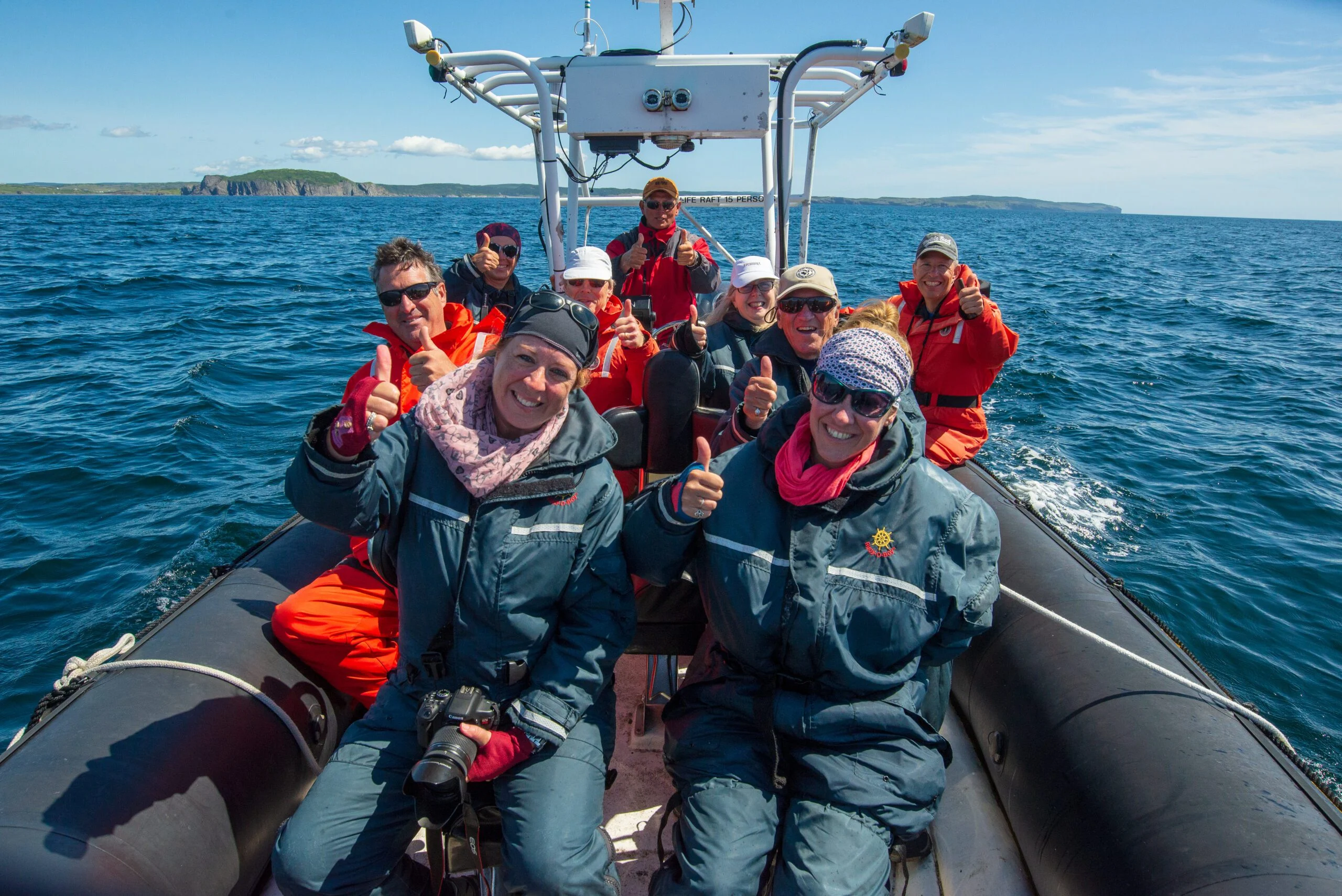
Planning your visit during the optimal whale-watching seasons is crucial to maximize your chances of witnessing these incredible marine giants. In Trinity Bay, the prime months for whale watching typically span from late spring to early summer. The whales migrate through the bay during this period, spectacularly displaying their natural behaviours. May to September is considered the peak whale-watching season, with July and August being advantageous months.
During these warmer months, the waters of Trinity Bay come alive with marine activity, creating an unparalleled experience for enthusiasts. The mild climate and longer daylight hours enhance the overall enjoyment of the excursion. Trinity Bay presents several vantage points for optimal whale watching. The charming town of Trinity itself is a hub for whale-watching tours, providing access to knowledgeable guides and comfortable vessels equipped for the adventure.
Skerwink Trail, renowned for its breathtaking coastal scenery, also offers excellent opportunities to spot whales from elevated viewpoints. For a more intimate experience, consider booking a boat tour departing from Trinity Bay. These tours often take visitors closer to the action, allowing for an up-close encounter with these magnificent creatures. The skilled guides on these excursions provide valuable insights into the behaviour of whales and biology, enhancing the adventure’s educational aspect. Whale watching in Trinity Bay is a unique and unforgettable experience combining natural beauty and the thrill of encountering marine giants.
8. The Rooms: Art and Cultural Center

Enjoy Newfoundland and Labrador rich culture and heritage at The Rooms in St. John’s. This cultural center houses art galleries, museums, and archives, comprehensively understanding the province’s history and artistic expressions. This iconic Art and Cultural Center, perched on the hills overlooking St. John’s, is a multifaceted institution that seamlessly blends art, history, and heritage.
The Rooms serves as a cultural hub, housing a comprehensive collection of artifacts, artworks, and archival materials that span centuries. From indigenous art to contemporary exhibits, the center provides visitors with a kaleidoscopic journey through Newfoundland and Labrador cultural evolution. The carefully curated displays showcase the artistic prowess of local talents and shed light on the historical narratives that have shaped the province.
One of the distinguishing features of The Rooms is its commitment to fostering a connection between the past and the present. The center’s architecture is a nod to this ethos, with its striking design symbolizing the convergence of history and modernity. The building’s angular structure mirrors the rugged coastal cliffs of Newfoundland, while its expansive windows offer panoramic views of the city below. Such thoughtful design elements make The Rooms not just a repository of cultural artifacts but an immersive experience that transports visitors through time. Exhibits | The Rooms

To truly understand the significance of The Rooms, one must explore its various galleries and exhibition spaces. The Art Gallery, for instance, showcases an extensive collection of visual arts, ranging from paintings to sculptures, capturing the essence of Newfoundland vibrant artistic community. Meanwhile, the Museum division presents a compelling narrative of the province history from its indigenous roots. The Rooms provides an invaluable resource through its Archives division for those seeking a deeper connection with Newfoundland and Labrador cultural identity. Housing an extensive collection of documents, photographs, and oral histories, the Archives offer researchers and enthusiasts a wealth of information to explore. This commitment to preserving the province heritage ensures that future generations can continue learning from and appreciating Newfoundland and Labrador rich past.
9. Explore Fogo Island: A Quaint Retreat
Escape to the tranquillity of Fogo Island, a picturesque island known for its artist studios and unique architecture. Stroll through quaint villages, interact with local artists, and savour the serenity of this remote retreat.

Nestled in the Atlantic Ocean, Fogo Island is an unspoiled beauty and tranquil retreat. This secluded island, known for its unique charm and breathtaking landscapes, has become a haven for those seeking a peaceful escape. Fogo Island is renowned for its pristine landscapes, rugged coastlines, picturesque fishing villages, and rolling hills inviting exploration. Begin your journey by immersing yourself in the island’s natural beauty, from the inspiring views at Brimstone Head to the serene trails of Fogo Island’s numerous hiking routes. Capture the essence of the island’s tranquillity as you traverse its unspoiled terrain. Activities: Fogo Island
Explore the charming villages scattered across Fogo Island, each with unique character and cultural significance. From the vibrant colours of Joe Batt’s Arm to the historic architecture of Tilting, these villages offer a glimpse into Fogo Island rich history and tight-knit communities. Engage with the locals, savouring the warmth of Fogo Island’s hospitality, and discover the traditions shaping this idyllic retreat.
Indulge your taste buds in Fogo Island’s culinary treasures, where local ingredients take center stage. From freshly caught seafood to handpicked berries, the island’s gastronomic offerings are a treat for food enthusiasts. Sample traditional dishes at local restaurants and immerse yourself in the flavours that define Fogo Island’s unique culinary scene.
Enhance your Fogo Island experience by choosing accommodations that blend luxury with the island’s secluded charm. Discover boutique inns and contemporary lodges that offer panoramic views of the surrounding Ocean. Whether you opt for a cliffside retreat or a cozy cabin, Fogo Island’s accommodations promise a comfortable stay amid the island’s natural splendour.

Whether you seek relaxation or adventure, Fogo Island caters to various interests. From kayaking along the rugged coastline to attending local art workshops, the island provides diverse activities. Uncover hidden gems and secret spots, ensuring every moment on Fogo Island is filled with exploration and wonder. This quaint retreat uniquely blends natural beauty, cultural richness, and tranquillity. Whether you’re an avid nature lover, a history enthusiast, or a culinary connoisseur, Fogo Island invites you to experience its charm. Plan your getaway to this hidden gem, and let the island’s serene ambiance rejuvenate your spirit.
10. Hiking the East Coast Trail
The East Coast Trail offers hiking trails along the rugged coastline for outdoor enthusiasts. Each trail provides stunning views, from sea cliffs to historic sites, making it a must for those seeking an active adventure. The East Coast Trail is a hidden gem for hiking enthusiasts, offering a breathtaking journey through the natural wonders of the eastern coastline. This extensive network of trails spans picturesque landscapes, from rugged cliffs to serene coastal paths. The East Coast Trail boasts an impressive collection of trails, each with unique charm and challenges. From the famous Signal Hill to the less-explored Flamber Head Path, hikers can choose from various routes that cater to different skill levels. The diversity of the trails ensures that there’s something for everyone, whether you’re a seasoned hiker or a novice seeking a scenic escape.

Signal Hill Hike: This iconic trail offers stunning views of the Ocean and the historic city of St. John’s. Hikers can witness the convergence of natural beauty and human history as they navigate this well-maintained Path. Spout Path: Nature enthusiasts will be captivated by the Spout, a natural geyser that propels seawater high into the air. This unique phenomenon adds an element of surprise to the trail, making it a must-visit for those seeking a touch of magic in their hiking experience.
Sugarloaf Path: The Path presents steep ascents and descents for a more challenging hike, rewarding hikers with unparalleled views of aquamarine seas and towering cliffs. This trail is ideal for those who crave a physical challenge and inspiring scenery. East Coast Trail. While the East Coast Trail offers an unforgettable experience, it’s crucial to prioritize safety during your hike. Here are some essential tips to ensure a secure and enjoyable journey: Weather Preparedness: Coastal weather can be unpredictable, so checking the forecast before hiking is necessary. Dress in layers, carry rain gear and be aware of changing conditions. Trail Etiquette: Respect the environment and fellow hikers by adhering to trail etiquette. Stay on designated paths, pack out all waste, and minimize your impact on the delicate ecosystems along the trail.
Navigation Tools: Familiarize yourself with the trail map and carry navigation tools such as a compass or GPS device. Cell phone reception can be spotty, so it’s wise to have alternative means of navigation.
Bonus
11. Gros Morne Theatre Festival: Arts in Nature
Combine the love of arts and nature at the Gros Morne Theatre Festival. This annual event showcases various performances amid the park’s stunning landscapes, creating a unique fusion of culture and natural beauty. Theatre Newfoundland Labrador in western Newfoundland.
12. Visit the Bonavista Peninsula: Charming Coastal Towns
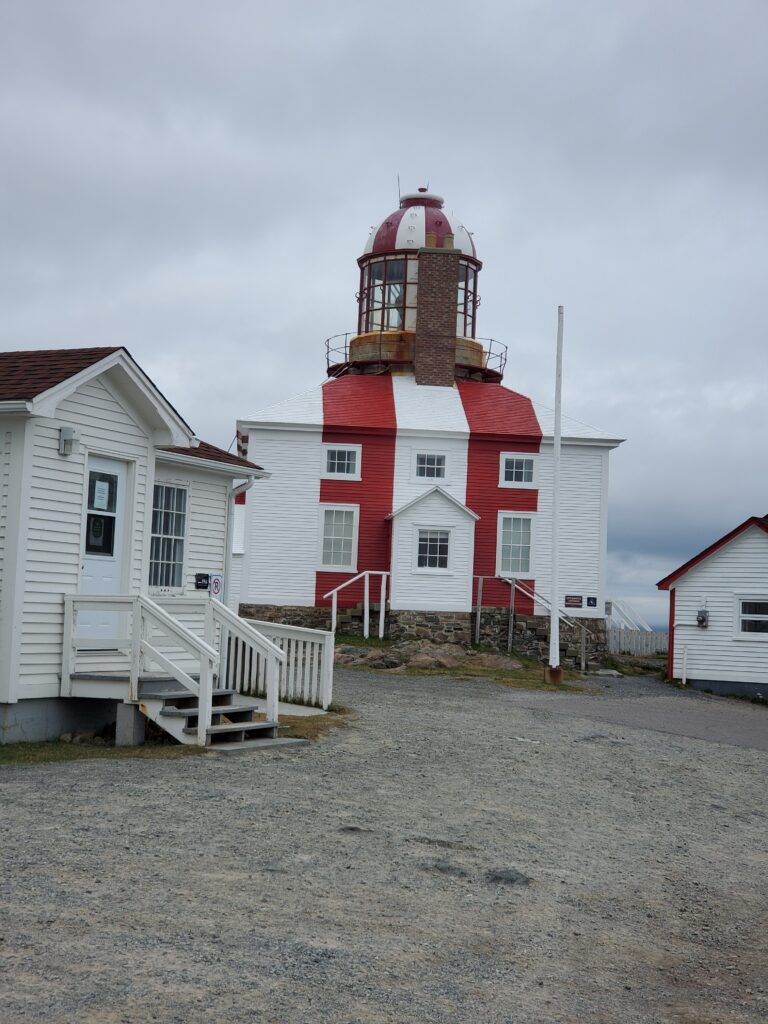
The Bonavista Peninsula boasts charming coastal towns, such as Bonavista and Trinity. Explore historic sites, stroll along picturesque shores, and immerse yourself in the warm hospitality of these quaint communities. Explore historic sites like The Ryan Premises, The Dungeon, Cape Bonavista Light and Puffins, whales, and icebergs in Elliston.
13. Brook Trout Fishing in the Humber River
For angling enthusiasts, the Humber River is a paradise for Brook Trout
fishing. Join a guided fishing expedition to experience the thrill of catching Atlantic Brook Trout surrounded by the stunning landscapes of western Newfoundland.
14. Explore the Burin Peninsula: Hidden Gems
The Burin Peninsula is a hidden gem featuring charming fishing villages and coastal scenery. Discover secluded beaches, visit historic lighthouses, and indulge in the authentic Atlantic atmosphere of this lesser-known part of Newfoundland.
15. Attend the St. John’s International Women’s Film Festival
For a cultural experience, consider attending the St. John’s International Women’s Film Festival. This annual event showcases the works of female filmmakers, providing a platform for diverse voices in cinema. St. John’s International Women’s Film Festival.
More Ways to Explore Newfoundland and Labrador
- What You Need to Know for Taking the Newfoundland Ferry Ride
- Taking the Ferry to Argentia Newfoundland
- Marine Atlantic Ferry From Nova Scotia To Newfoundland
- Best Places To Travel In 2024 For An Amazing Experience
- The Best Amazing Restaurants in St. John’s to eat out
- 15 Beautiful and Unique Things To Do In Newfoundland
- Out Of The Ordinary Things To Do In St. John’s
- Exploring The Unique and Beautiful Culture of Newfoundland
- Hiking On The Beautiful Brigus Lighthouse Trail
Newfoundland offers many unique and beautiful experiences for travellers. From the natural wonders of Gros Morne National Park to the cultural richness of St. John’s, this province captivates visitors with its diverse offerings. As you embark on your journey through Newfoundland, let the beauty of the landscapes and the warmth of its people create lasting memories of a truly remarkable adventure.
Travelling to Newfoundland and Labrador. Travelers also ask.

Is St. John’s, Newfoundland, worth visiting?
St. John’s, the capital, is worth visiting. St. John’s offers a rich cultural heritage, a vibrant arts scene, and breathtaking natural landscapes. Known for its colourful row houses, historic sites like Signal Hill, and picturesque harbour, St. John’s provides a unique blend of natural beauty. The city’s friendly locals, lively music scene, and excellent seafood add to its charm, making it a must-visit destination.
What is St. John’s, Newfoundland, famous for?
St. John’s is famous for several things:
- Signal Hill: This historic site offers panoramic views, and the Cabot Tower is where the first transatlantic wireless communication was received.
- George Street is renowned for its nightlife, with the most bars and pubs per capita in North America.
- Colourful Row Houses: Known as Jellybean Row, these brightly painted homes are iconic.
- Rich History: As one of the oldest cities in North America, it has a rich maritime history and cultural heritage.
How many days does it take to visit St. John’s, Newfoundland?
To fully experience St. John’s and its surroundings, a visit of 4 to 5 days is recommended. This allows time to explore the city’s historical sites, enjoy the local cuisine, enjoy the nightlife on George Street, and venture out to nearby natural attractions such as Cape Spear and Quidi Vidi Village.
Is St. John’s, Newfoundland, a walkable city?
Yes, St. John’s is a walkable city, especially in the downtown area, where many attractions, restaurants, and shops are concentrated. The city’s hilly terrain can be challenging, but it also offers beautiful vistas and charming streets to explore on foot.
What is the best month to visit Newfoundland?
The best months to visit Newfoundland are from late June to early September. The weather is milder during this period, and you can enjoy outdoor activities like hiking, whale watching, and iceberg spotting. July and August are viral for tourists.
What is the best time of year to visit St. John’s, Newfoundland?
The best time to visit St. John’s is during the summer, from June to early September, during this this time the weather is warm and many festivals and events occur. This is also the peak season for whale-watching and iceberg viewing.
Is St. John’s Newfoundland expensive?
St. John’s can be moderately expensive, especially during peak tourist season. Accommodation, dining, and activities can add up, but budget-friendly options are also available. Compared to larger Canadian cities, St. John’s is relatively affordable.
Is Newfoundland expensive to visit?
Newfoundland is not excessively expensive to visit, but costs can vary depending on the time of year and type of accommodation. While certain activities and dining experiences may be costly, there are plenty of free or low-cost activities to enjoy.
What is the famous street in St. John’s, Newfoundland?
George Street is famous in St. John’s for its vibrant nightlife and numerous bars and pubs. George Street is a popular spot for locals and tourists looking to experience live music and socialize.
Can you get around St. John’s without a car?
Yes, you can get around St. John’s without a car, especially downtown, where many attractions are within walking distance. You’ll have access to convenient transportation options, such as public transportation, taxis, and ride-sharing services.
How long is the ferry ride from Nova Scotia to St. John’s, Newfoundland?
There is no direct ferry to St. John’s. However, you can take a ferry from North Sydney, Nova Scotia, to either Argentia (a 16-hour ride) or Port aux Basques (a 6–8-hour ride) in Newfoundland. From there, you must drive to St. John’s, which takes approximately 1.5 hours from Argentia or 9 hours from Port aux Basques.
How long does it take to drive around St. John’s?
Driving around St. John’s can take about an hour, depending on traffic and stops. Exploring the greater St. John’s area, including nearby attractions like Cape Spear and Quidi Vidi, can take several hours.
What is the crime rate in St. John’s, Newfoundland?
St. John’s has a relatively low crime rate compared to other Canadian cities. While it experiences typical urban crime, it is generally considered a safe place for residents and visitors.
How cheap is Newfoundland?
Newfoundland is relatively affordable compared to other parts of Canada. While some areas, especially St. John’s, can be expensive, smaller towns and rural areas, however, offer more budget-friendly options for accommodation and dining.
What is the best way to tour Newfoundland?
The best way to tour Newfoundland is by car. This allows you to explore the island’s diverse landscapes, remote villages, and natural attractions at your own pace. Renting a car is recommended if you’re flying into the province.
In what month do you see icebergs in Newfoundland?
Iceberg season in Newfoundland typically runs from late May to early June, though icebergs can sometimes be seen as late as July. The best month for iceberg viewing is usually June.
What is the best month to see icebergs in Newfoundland?
June is generally the best month to see icebergs in Newfoundland. This is when most icebergs drift along the coast, providing spectacular viewing opportunities.
When can I see puffins in Newfoundland?
Puffins can be seen in Newfoundland from late May to early September. The best months to see them are June and July when they are most active during their breeding season.
What is the wettest month in Newfoundland?
October is typically the wettest month in Newfoundland, and it experiences the highest average rainfall.
When can you see whales in St John’s, Newfoundland?
Whale-watching season in St. John’s is from mid-June to mid-August. During this time, humpback, minke, and other whale species migrate through the waters of Newfoundland.
What should I pack for St. John’s, Newfoundland?
When visiting St. John’s, pack layers to accommodate varying weather conditions. Essentials include:
- Waterproof jacket and footwear
- Warm clothing (sweaters, hats, gloves)
- Comfortable walking shoes
- Sunscreen and sunglasses
- Cameras and binoculars for wildlife and iceberg viewing
Can you see the Northern Lights from Newfoundland?
You can watch the Northern Lights (Aurora Borealis) from Newfoundland, particularly in low-light pollution areas. The best time to see them is from late fall to early spring.
Where is the best place to see whales and icebergs in Newfoundland?
Twillingate and Bonavista are Newfoundland best places to see whales and icebergs. These coastal areas offer excellent viewing opportunities and tours.
Are there polar bears in Newfoundland?
Polar bears are occasionally seen in the northern parts of Newfoundland and Labrador, particularly in the Labrador region. They are not commonly found in Newfoundland itself.
How long does it take to drive from one end of Newfoundland to the other?
Driving from the western end of Newfoundland (Port aux Basques) to the eastern end (St. John’s) takes approximately 9–10 hours without significant stops.
Is Fogo Island worth visiting?
Fogo Island is worth visiting for its unique culture, stunning landscapes, and renowned Fogo Island Inn. It offers a distinctive experience of Newfoundland’s heritage and natural beauty.
How often can you see northern lights in Newfoundland?
The Northern Lights can be seen in Newfoundland several times a year, particularly during periods of high solar activity. The best times are during winter when nights are longer and darker.
What is the best time to see the Northern Lights?
The best time to see the Northern Lights is during the winter, from late September to early April, particularly around midnight or early morning.
How long is the ferry ride to Fogo?
The ferry ride to Fogo Island from Farewell, Newfoundland, takes approximately 45 minutes to an hour.
How much is the ferry to Fogo Island?
As of the latest information, the ferry to Fogo Island costs around $15–20 CAD per vehicle and additional fees for passengers, but prices can vary, so it’s best to check current rates.
What is so special about Fogo Island?
Fogo Island is unique for its rugged natural beauty, traditional outport culture, and the acclaimed Fogo Island Inn. It’s known for its artistic community, distinctive architecture, and stunning coastal Scenery.
Are there narwhals in Newfoundland?
Narwhals are typically found in Arctic waters and are uncommon in Newfoundland.
Are there dolphins in Newfoundland?
Yes, dolphins can be seen in the waters around Newfoundland, including species like the Atlantic white-sided dolphin and the common dolphin.
Are there killer whales in Newfoundland?
Killer whales (orcas) are occasionally sighted around Newfoundland, especially during summer.
What is Cape Spear known for?
Cape Spear is known for being the easternmost point in North America. It features a historic lighthouse and offers stunning 180-degree views of the Atlantic Ocean, making it a popular tourist spot.
Where can I see whales in Newfoundland?
Some of the best places to see whales in Newfoundland include:
- St. John’s and Cape Spear
- Trinity and Bonavista
- Twillingate
- Witless Bay Ecological Reserve
How do you see puffins in St John’s?
To see puffins near St. John’s, visit the Witless Bay Ecological Reserve island, which is home to large colonies of puffins. Boat tours from Bay Bulls can take you close to the puffin nesting sites.
How long do you need to see Newfoundland?
Plan to spend at least 7–19 days to see Newfoundland highlights. This allows enough time to explore St. John’s, the Avalon Peninsula, Gros Morne National Park, and other key attractions.
When should I go to Newfoundland?
The best time to visit Newfoundland is from late June to early September when the weather is mild. You can enjoy outdoor activities, events, and festivals. This period is also ideal for whale-watching and iceberg-viewing.
These are the best travel planning resources you should use.
Looking to book your trip to Newfoundland and Labrador? Use these resources that are tried and tested by other travellers like you who vacation in Newfoundland and Labrador. Bookmark these links. Save them for future reference.
Booking Flights, Hotels or B&B: Start planning your next vacation trip by finding the best flight, hotel or b&b deals. Book Here
Finding things to do in Newfoundland and Labrador on TripAdvisor and Viator is not hard. Enjoy boat tours, whale watching, icebergs watching, kayaking and other activities.
You can also find low prices on hotels, B&B and cabins with these two providers. If you are located in Canada, the USA, the UK or Europe, use Booking.com, and if you are in Canada, the USA or anywhere else, use TripAdvisor.
Car Rental: Here is what we recommend:
When you book with Rentalcars.com, you can compare prices and find the best vehicle for your trip. Economybookings.com Display all their vehicle on the website with a detailed description. They display high-quality photos and a user rating as well. Qeeq.com serves road trip travellers like you from different countries by working with car rental companies worldwide.
Get compensated if your flight is delayed or cancel
AirHelp and Compensateair will help you with flight delays, cancellations, or denied boarding. All you need to do is to submit your flight details, and they will handle the claim process on your behalf. They will handle all the paperwork, airline negotiations, and legal proceedings.
Do you need more help planning your trip?
Check out our Resources Page, where we highlight all the resources and companies you can use to assist with your planning.
Where can I find more information about travelling to Newfoundland and Labrador? Here are helpful resources for planning your trip:
Newfoundland and Labrador Tourism | Travel Canada | The Rooms Provincial Museum

